|
 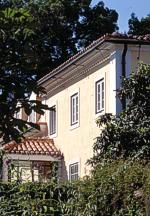 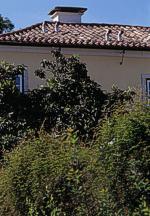
Quinta das Lgrimas (Estate of Tears) came to the
possession of the present owners' family in 1730. Before that, the Quinta
had already belonged to the University and to a religious Order.
The Palace was built during the XVIIIth century but, due to a fire that
occurred in 1879, vast construction works had to be carried out in the
inside as well as on the outside. Therefore, the house has a XIXth century
architecture showing the several influences its owner, Miguel Osrio
Cabral de Castro, gathered from his frequent traveling in Europe. Because
he died without direct heirs, the house passed onto his grand-nephew,
D. Miguel Osrio Cabral de Alarco, whose grandchildren are the present
owners.
Throughout the years the Quinta was honored with the visit of several
illustrious characters, who left important traces of their presence.
One of this celebrities was Arthur Wellesley, Duke of Wellington and
Commander of the British Corps that helped to counterattack the Napoleonic
invasions.
He stayed here because the owner of the house was at that time Antnio
Maria Osrio Cabral da Gama e Castro, his aide-de-camp, who fought next
to him at the battle of Buaco. During the time he spent here, Lord
Wellington, fell in love with the Quinta and with the legend of Pedro
and Ins, and to prove so he offered the stone which is now near the
Fonte das Lgrimas, where he transcribed the verses from Lusadas narrating
the death of D. Ins de Castro.
 This act of horror, and black night obscure,
This act of horror, and black night obscure,
Mondego's daughter long resented deep;
And, for a lasting tomb, into a pure
Fountain transformed the tears which they did weep.
The name they gave it (which doth still endure)
Was Ines' loves, whom Pedro did keep.
No wonder, such sweet streams water those flowers:
Tears, are the substance; and the name Amours.
(Translated by Sir Richard Fanshawe) estrofe
135 do canto III dos Lusadas:
He also planted two sequoias, which are now approximately
190 years old and carry his name. Several years later D. Miguel I, King
of Portugal, honored the Quinta with his visit and, according to the
stories told by the family, he was delighted by this wonderful scenery.
During his visit to Quinta das Lgrimas, Jos Maria Osrio Cabral (owner
of the property) dedicated him a poem, made by improvisation:
Nas meigas Nymphas lagrimas formaram
Na fonte que contemplas, rei amado,
Da miseranda Ignez o acerbo Fado
To saudosas, com tanta dor choraram:
Hoje de nossos coraes brotaram
Lgrimas do prazer mais sublimado,
Por vermos o monarcha idolatrado,
Por quem to anciosos suspiraram.
Mas vae, senhor, ganhar-vos a victoria,
Corta da hydra feroz crueis enganos
Novo esplendor dars lusa histria.
E sabe que entre peitos lusitanos
N'estes stios ser tua memria
Brazo perenne at o fim dos annos.
Another visitor of historic importance was
D. Pedro II, Emperor of Brazil. A chronicle in a newspaper of that time,
the Comrcio da Figueira da Foz, tells that "(...) they went to
the Fonte dos Amores where Mr. Miguel Osrio had a light meal waiting
on two tables, under the cedars near the water spring. The tables, which
were placed near the stream, were adorned with flowers and elegant silver
vases from the familys possessions. Their Majesties enjoyed immensely
the delicate surprise prepared by the owner of the house, and helped
themselves to several desserts, fruits and wines; and they found the
place so pleasant that they stayed there for a while, near the fountain,
from which they drank some water"
 
The
Garden
Most of the gardens in Lgrimas were designed
by Miguel Osrio Cabral de Castro in XIXth century. The garden followed
a fashion of that time, which was to create a private Vegetal Museum
where species from all over the world would be present. In Lgrimas,
rare and precious species were planted, some of which are unique in
Portugal. The owner at that time benefited from his friendship with
the director of the famous Coimbra Botanical Garden and exchanged species
with him. In the Lgrimas collection there are different trees such
as gum trees, camphor-trees, sequoias, plane-trees, oaks and palm trees,
among hundreds of others.
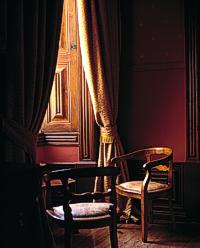 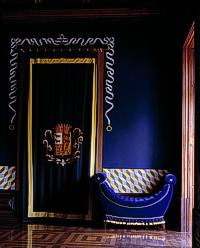
Historic Perspective
Ins de Castro belonged to a powerful family from Galiza, and was descendent
of Sancho IV, the king of Castile. She was also connected to the Albuquerque
family. Afonso Sanchez (bastard son of Dom Diniz, King of Portugal),
hated by Dom Afonso IV was married with the Albuquerque castle's owner.
This lady was seen as a mother by D. Ins because she had raised her.
This will be the first cause of hate between Afonso IV and D. Ins de
Castro. In 1350 began in Castile a revolt of the great lords against
Pedro I of Spain. The leader of this rebellion was Joo Afonso de Albuquerque,
son of Afonso Sanches and therefore a sort of adoptive brother of D.
Ins. He certainly used his influence on Ins in order to get D. Pedro,
who had an affair with her, involved in the castilian civil wars. His
attempt to influence D. Pedro was so strong that in 1354 Joo Afonso
sent to Portugal a brother of D. Ins to convince D. Pedro to claim
for himself the throne of Castile (D. Pedro was the grandson of SanchoIV).
D. Pedro refused this because his father was strongly against it. In
order to stop him, D. Afonso IV ordered the death of Ins de Castro
when D. Pedro was absent. The executioners were lvaro Gonalves, Diogo
Lopes Pacheco and Pedro Coelho, men acting under the king's protection.
Hurt by his father's verdict, D. Pedro rebelled and for several months
his troops swept the country in such a way that Oporto was under siege.
As soon as D. Pedro became King and in spite of his promises of forgiveness,
he captured the assassins of D. Ins who had before escaped to Castile
in order to avoid his fury. One of them managed to escape but two were
captured, tortured and executed. D. Pedro took the heart of one of them
through the back and from the other he took the heart through the chest.
In 1360 the King announced that he had married Ins secretly and, on
that occasion, he gave the order for their graves to be built in the
monument of Alcobaa, where he too was buried.
 
|




 This act of horror, and black night obscure,
This act of horror, and black night obscure,







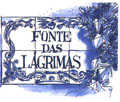 world.
Cames dedicated a great part of the "Lusadas" to the legend
of Ins de Castro but other names, Portuguese as well as foreigners,
left in their works testimony of this episode of Portuguese history.
Among them we can quote Antnio Ferreira, Voltaire, Victor Hugo, Ezra
Pound, Stendhal, Agustina Bessa-Luis, Manuel Alegre and Ana Maria Magalhes
and Isabel Alada, Henri Montherlant, only to refer a few.
world.
Cames dedicated a great part of the "Lusadas" to the legend
of Ins de Castro but other names, Portuguese as well as foreigners,
left in their works testimony of this episode of Portuguese history.
Among them we can quote Antnio Ferreira, Voltaire, Victor Hugo, Ezra
Pound, Stendhal, Agustina Bessa-Luis, Manuel Alegre and Ana Maria Magalhes
and Isabel Alada, Henri Montherlant, only to refer a few.